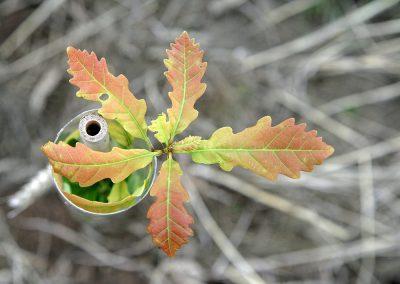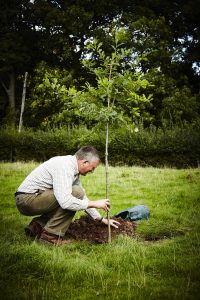
All hail the mighty oak...
‘Think of the fierce energy concentrated in an acorn! You bury it into the ground and it explodes into an oak!’ Oak Tree by George Bernard Shaw.
The history of the oak
Tightly interwoven into the history of Great Britain, the oak has played its part in our past more than any other native tree. For centuries the ‘king of the forest’ has lent its timber, prized for its strength and durability, to construction, furniture makers and shipbuilders and has long been heralded as the country’s national tree. So engrained is it in our psyche that it would be no exaggeration to say that Britain was built on oak. We even name our pubs after it and put it on our pound coins!
Deep in the mists of time, druids would worship in oak groves and couples married under its spreading boughs, while Greeks and Celts were convinced of its magical powers. Roman soldiers wore oak leaf crowns when celebrating victory and the ships of Drake and Nelson were constructed of its resilient and disease-free wood. With trees regularly living for over 1,000 years, it is almost inevitable that the oak is entrenched in British folklore, with perhaps the most famous tree being the Royal Oak at Boscobel House, Shropshire, where Charles II hid from the marauding Roundhead army during the English Civil War.
A shapeshifter
The traditional English oak’s formal name is the pedunculate oak, but in the Heart of England Forest visitors can also see sessile oak among others from the family. With its wide, irregular rounded crown, grey fissured bark and low-hanging boughs, the English oak has long been a favourite of tree-climbing children. Deeply lobed leaves on short stalks appear in the first flush of spring along with male and female catkins, which die off soon after. The first growth of oak leaves is often devoured quickly by insects, to be replaced by a second growth in midsummer, sometimes known as the ‘Lammas’ growth.
Oaks growing on open land often spread out, but when surrounded by forest they adapt their shape and stay slim and slender, growing taller to reach out for sunlight. With very deep roots they can tolerate drought well and do not mind being waterlogged for long periods, even in salty water. Remarkably resilient, at their happiest oaks can grow as tall as 45 metres while the biggest ever recorded oak, the Newlands oak, had a trunk measuring 45 feet around before it fell. Today, the largest oak tree in the country can be found in Sherwood Forest and has a girth of 33 feet. Estimated to be between 800 and 1000 years old, it is thought to weigh a staggering 23 tons!
Distinctive from the English oak is the sessile oak. The chief differences include the shape of the leaves – the sessile oak has a rounded, less deeply lobed leaf and unlike its brother, the sessile oak’s acorns are not retained on stalks.

Continuing the tradition, providing a home
At the Heart of England Forest the tradition of this strong native tree is being upheld, with both pedunculate and sessile oaks planted in large numbers. Important habitats for a large number of animals, research has shown that more than 280 species rely on the oak tree family for food and shelter – more than on any other British tree species. Notable among these are the purple hairstreak butterfly and the oak tortrix moth, but there are many other species of moth whose larvae feed on its foliage. In addition, animals and birds such as badgers, deer and jays feast on acorns; several species of bat make their home in oak; and birds including the pied flycatcher and marsh tit nest in the trees. Meanwhile, the larvae of wood-boring beetles and various species of fungi such as the oakbug milkcap continue to inhabit oak wood long after it has died and lies rotting on the forest floor.
As one of the nation’s most highly valued and celebrated natural resources, ensuring the future of the oak lies at the core of the Heart of England Forest’s plans. By planting new trees and preserving the mature ones, we aim to ensure that its place in history as an essential ingredient of our woodlands remains secure.
See if you can spot the different species of oak as you wander the woodland. Send us your pictures via Instagram, Facebook, Twitter, or by email to info@heartofenglandforest.org



